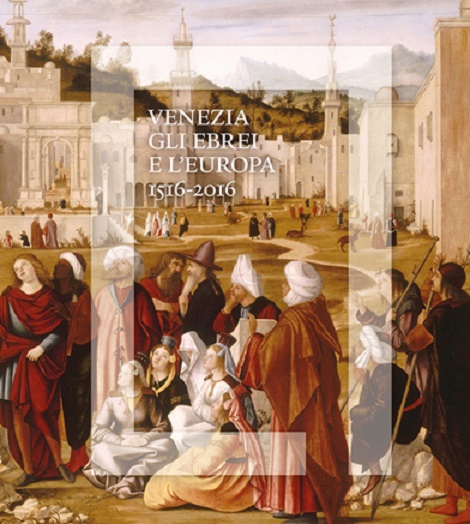Among the events lined up to commemorate the Venice Ghetto’s fifth centenary (1516-2016), the exhibition Venice. The Jews. Europe 1516-2016, running until November 13 at Palazzo Ducale, deserves a special mention.

Paintings from five centuries by masters such as Giovanni Bellini, Carpaccio, Foraboschi, Hayez, Poletti, Balla, Wildt and Chagall are on display, alongside century-old architectural drawings, books in original editions, archival documents, liturgical objects and furniture and multimedia recreations illustrating a five-century history that was also marked by relations and cultural exchanges.
The exhibition is based on the belief that the history of the foundation of the Ghetto in Venice should be viewed within the broader context of how the Venetian Republic managed the national, ethnic and religious minorities living in the city. The Ghetto was a cosmopolitan environment: here, German and Italian Jews, Eastern and Western Jews and Portuguese Jews lived together.
It was exposed to the different cultures that came into contact with the Serenissima, as Venice was called.
In the early decades of the 16th century, the Venetian Republic had economic and commercial relations with Northern Europe (the Fondaco dei Tedeschi housed the headquarters of the city’s German merchants), with Orthodox Greeks (who were allowed to build at their expense a church and a school) and later with Albanians, Persians and Turks.
The presence of the Jews, like that of other minorities, was a valuable asset to the Serenissima, and the city’s judiciary, some aristocrats and the Doge Leonardo Loredan himself, who was “Prince” when the ghetto was established by decree (March 29, 1516), were aware of this.
Nevertheless, Venice, which had allowed the Jews residing within its territories to enter the city as war refugees, (even at a time when Europe was sending them away, with the famous expulsion decrees from Spain in 1492 and Portugal in 1496) soon found itself having to address the issue of how to treat the Jewish minority following the tragic consequences of the league of Cambrai and the defeat of Agnadello.
On March 29, 1516, the Senate of the Republic of Venice decided that, in order to avoid unrest, the Jews residing in the different districts of the city had to relocate to the Ghetto, at San Girolamo. At the same time, the Jews who lived in the Ghetto Nuovo (New Ghetto) were forced to pay pay a rent one third higher than Christians.
The decision not to expel the Jews, but to keep them inside the Ghetto instead, was seen as the lesser evil, and the seclusion eventually also became a form of defense.
The Jews, who had little political power outside the Ghetto, became independent inside it, almost masters of their actions, in many cases much more than many of Venice’s inhabitants and subjects, who were at the complete mercy of the Doge, the Prince, the Pope or the King.
Venice. The Jews. Europe 1516-2016, Palazzo Ducale, Venice, until November 13.
Author: Lorenzo Zanini | Source: Italy Europe 24 [June 21, 2016]
VIA «'Venice, the Jews and Europe 1516-2016' at the Palazzo Ducale, Venice»